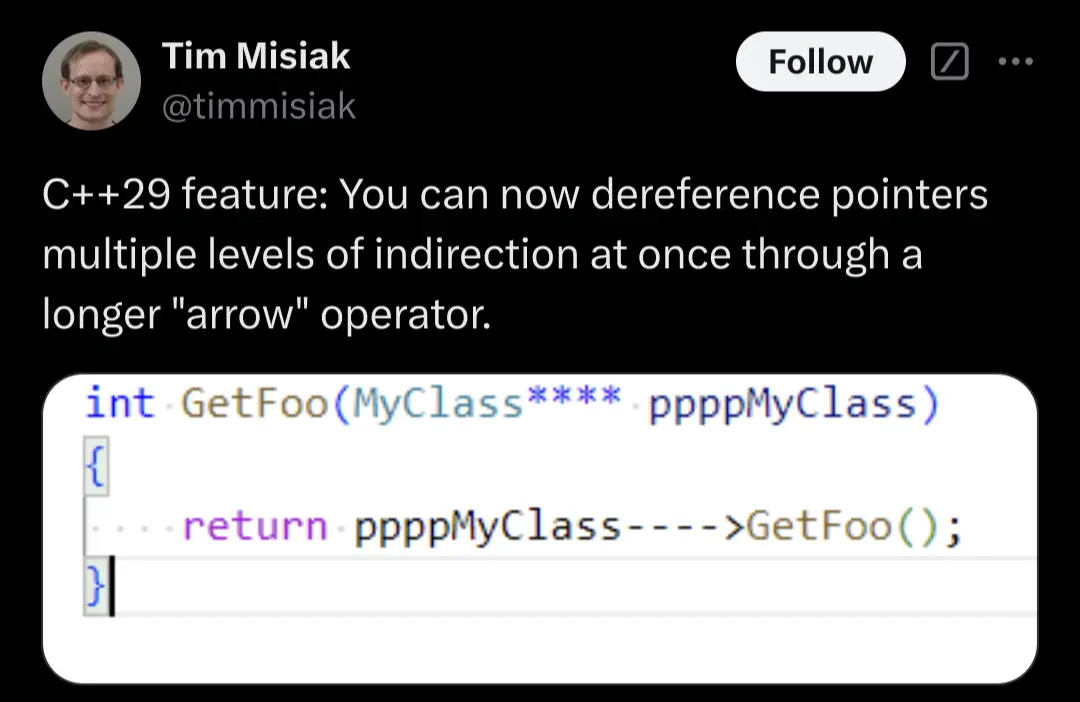this post was submitted on 29 Dec 2024
350 points (98.9% liked)
Programmer Humor
22364 readers
2618 users here now
Welcome to Programmer Humor!
This is a place where you can post jokes, memes, humor, etc. related to programming!
For sharing awful code theres also Programming Horror.
Rules
- Keep content in english
- No advertisements
- Posts must be related to programming or programmer topics
founded 2 years ago
MODERATORS
you are viewing a single comment's thread
view the rest of the comments
view the rest of the comments

The distinction is meaningless in the land of Opcode's and memory addresses
For example, a struct is just an imaginary "overlay" on top of a contiguous section of memory
Say you have a struct
You could easily get a reference to
foo->child->bby doing pointer arithmetic(I've not used C much so I've probably got the syntax wrong)
Magic.
Blasphemy.
Yes, you can do crazy shit if you try hard enough, but every reasonable programmer would access
foo->child->balsfoo->child->band not via that crazy LISPy expression.By question was: Why would you have a pointer to a memory address that itself only holds a pointer somewhere else?
So far the only reasonable explanation is from @Victoria@lemmy.blahaj.zone:
I'm more talking about theory than practical.
I've not developed anything in C/C++, so I don't know practical uses for a double pointer, aside from multidimensional arrays, or arrays of pointers
My point was that, conceptually, pointers to pointers is how most complex data structures work. Even if the C representation of said code doesn't have a
int**somewhere